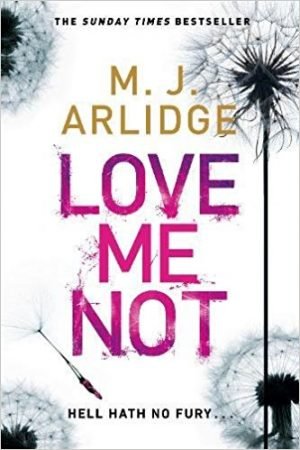
The story unfolds from the perspective of numerous other characters including Sanderson; DS Charlene ‘Charlie’ Brooks, who is Grace’s closest ally in the department; various witnesses; and irritating journalist Emilia Garanita. Garanita is determined to get the scoop on the serial killer story and goes about it in all the sleaziest ways (money changes hands). The perspective of the killers comes into play, as well, in the book’s 126 short chapters, a rare one of which is more than three pages long.
Although so many of the principal characters are women, they seem no more than superficially female. Grace rushes into situations without analysis or following any procedural requirements. Well along in the story, MJ Arlidge writes that Helen is now being propelled by instinct, though it seems to have driven her all along. And, though the author refers to Grace’s feelings about her work, her emotions tend to be expressed in clichéd, rather than insightful, ways. There’s an unsatisfying pop psychology analysis of the killers’ motivations that does not evolve as new information is gained.
Perhaps police and school administrators’ paranoia about shooting incidents is markedly less in the UK than in the States, but when the serial killer invades a middle school, you have to wonder whether there should be more of a protocol or official response than having Grace calmly suggest to a bunch of bemused teachers and students that they leave.
Authors are constantly told to show rather than tell, especially when it comes to emotions. A worse pitfall is showing (good), then telling (why?). This suggests the author doesn’t trust us to understand what’s happening. For example, a man is numb with shock about his wife’s murder until his dogs bound into the room and affectionately greet him. As he pets them, Charlie is moved to see him coming near to tears. Since you know Charlie is an empathetic gal, you would assume the scene would move her. But then the author can’t resist adding that the dogs’ love and devotion has penetrated the husband’s shock, revealing how devastated he is. Such over-explaining takes all the wind out of the emotional moment.
The action occurs over the course of a single jam-packed day, with flashbacks as necessary, and starts early in the morning with the roadside murder of a woman who works in some undefined capacity with kids. The next killing takes place shortly thereafter, the victim a pharmacist whose safe is ransacked for drugs. Grace’s challenge is to figure out whether the victims were random or part of a pattern. If so, are there more victims to come?
Surprisingly, the police determine the identity of one of the killers less than a third of the way into the novel and the other, less than half way in. This means the entire last half the book is an extended chase scenario as the police struggle to get one step ahead of the perpetrators.
It is fast-paced, of course, and if you are attracted to entertainment rich with car chases it might be just the ticket. This is Arlidge’s seventh novel featuring DI Grace, and he has been producing two of them a year since 2014, plus a pair of short stories. Perhaps the pace is starting to tell. He has spent much of his working life in television, including as executive producer of the prime-time crime serials Torn, The Little House, and Silent Witness. Arlidge’s previous DI Grace thrillers reviewed by CFL are Liar, Liar and the debut in the series, Eeny, Meeny. Apparently some of the series’ previous books, Grace is involved in the BDSM world. Not this one.
For more serial killer crime novels, click here. This novel is out 18 May.
Michael Joseph
Print/Kindle/iBook
£8.99
CFL Rating: 2 Stars